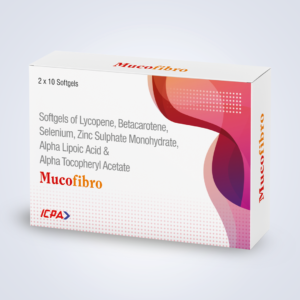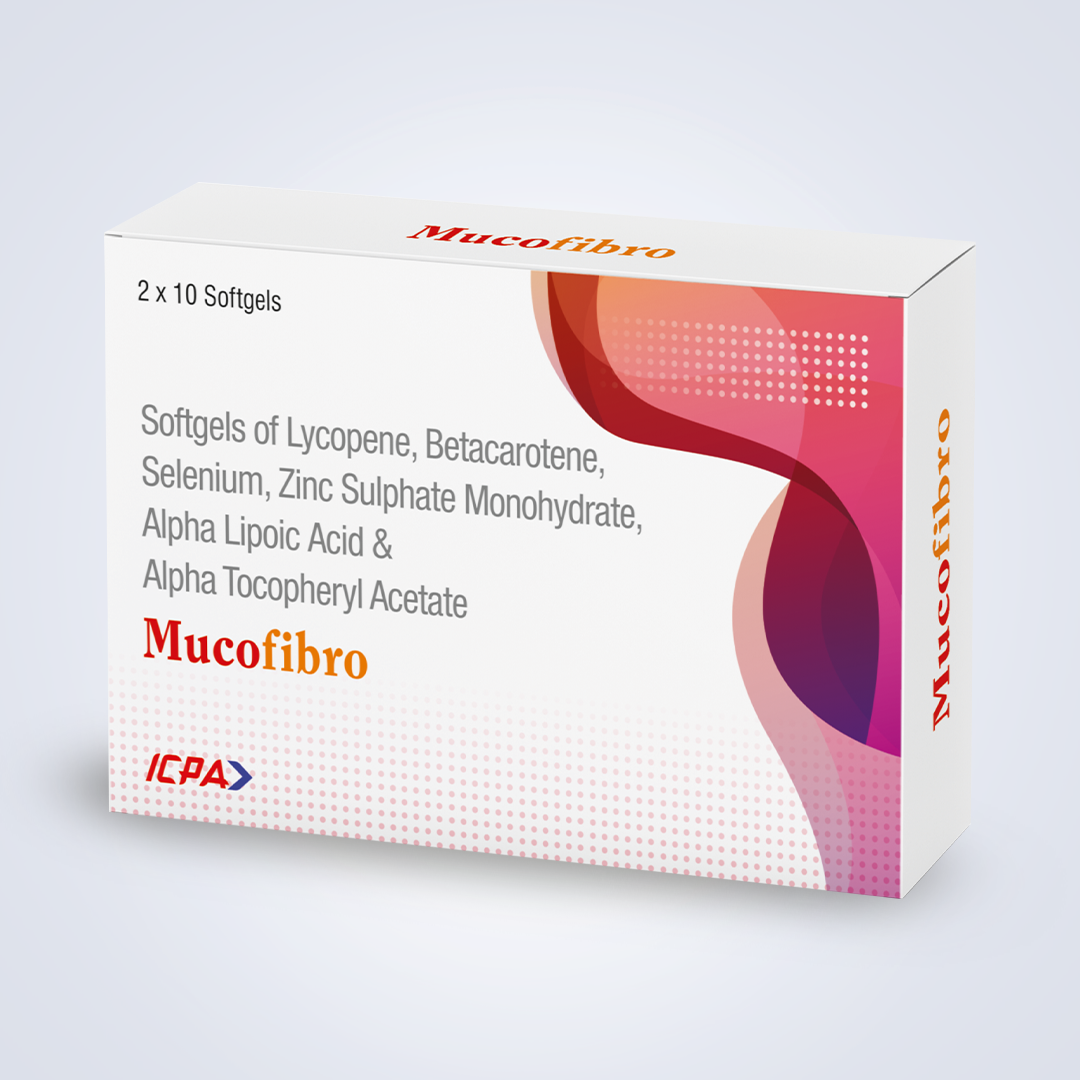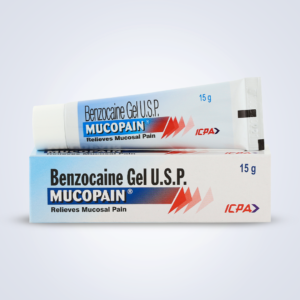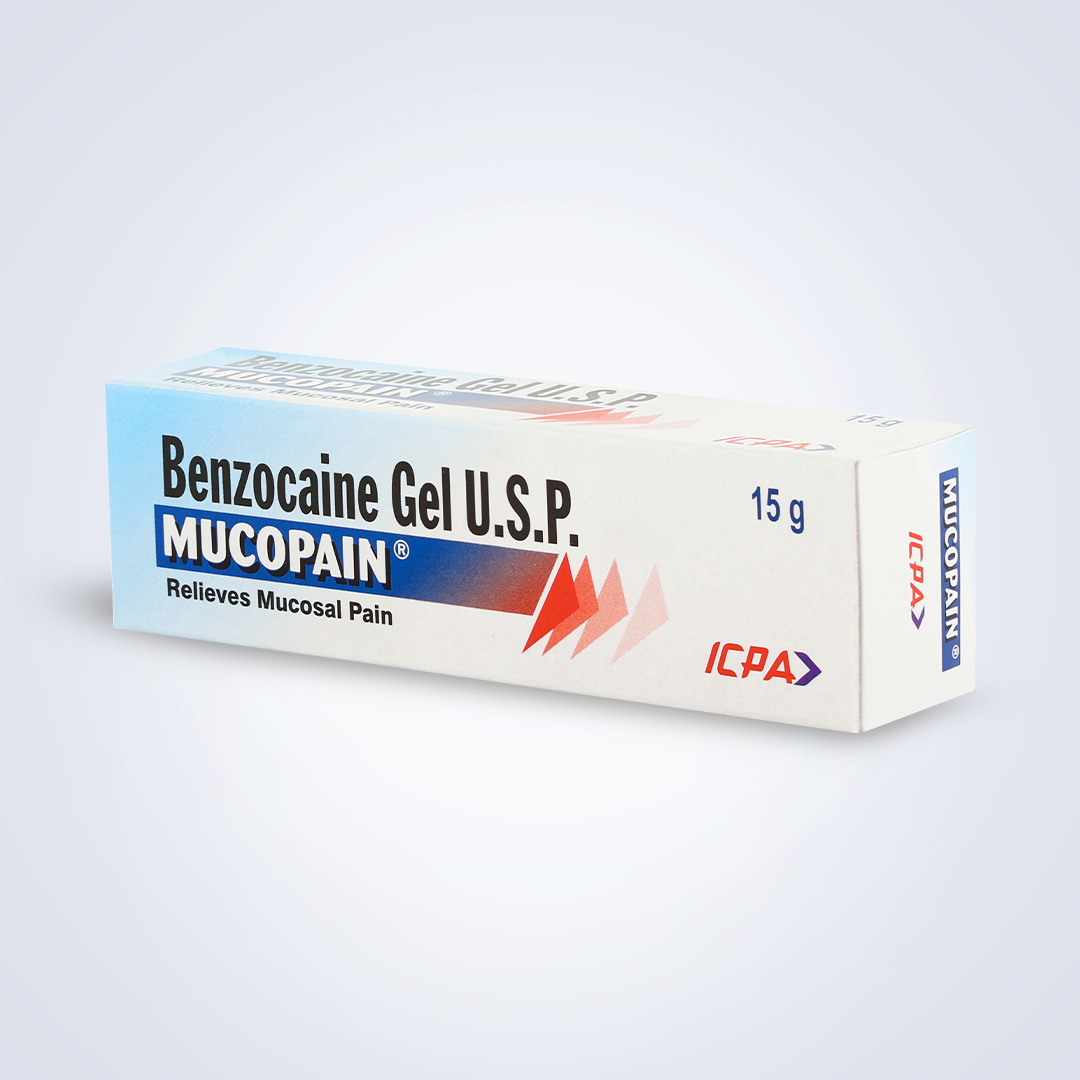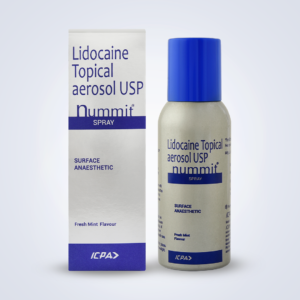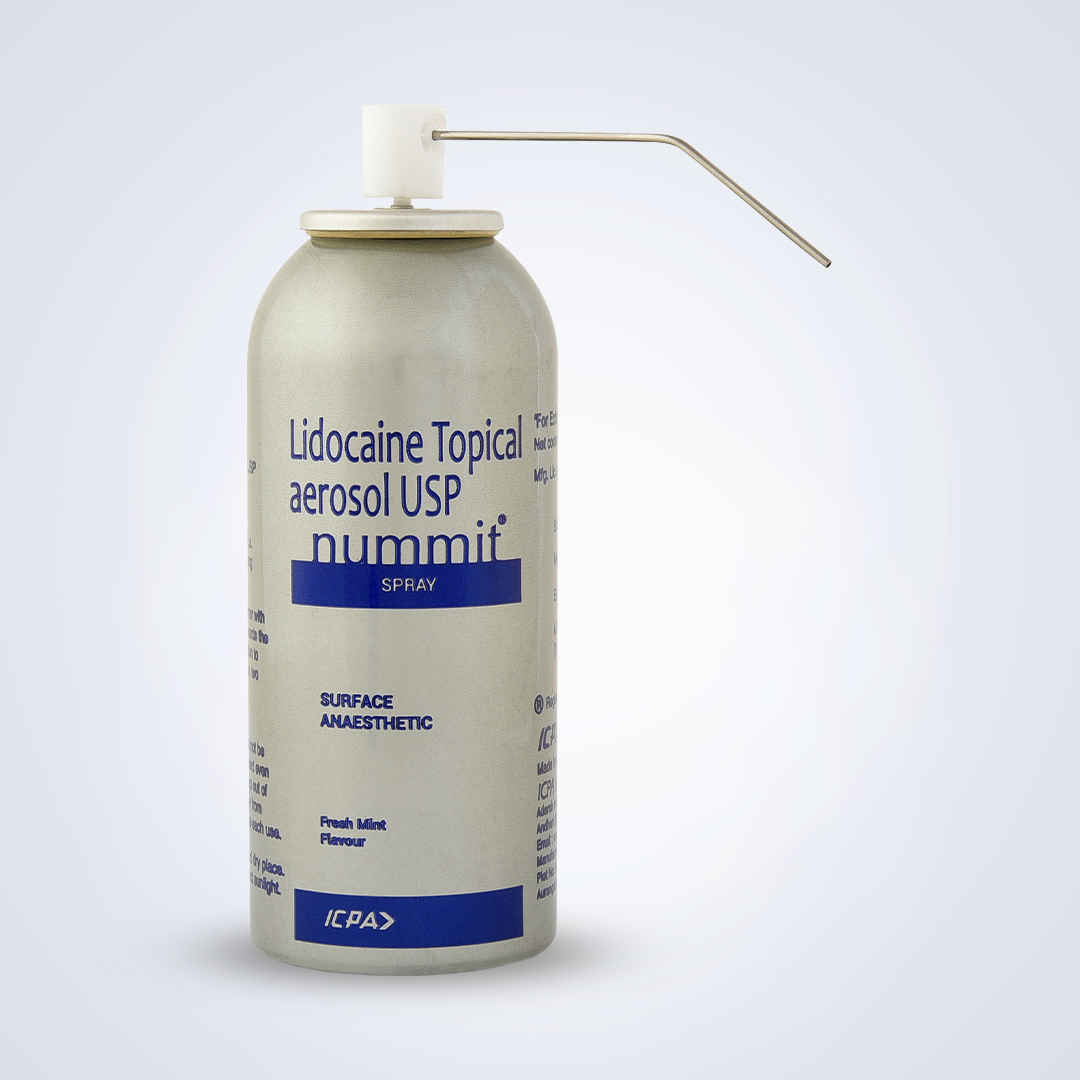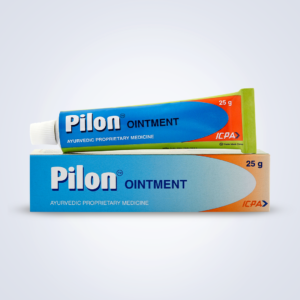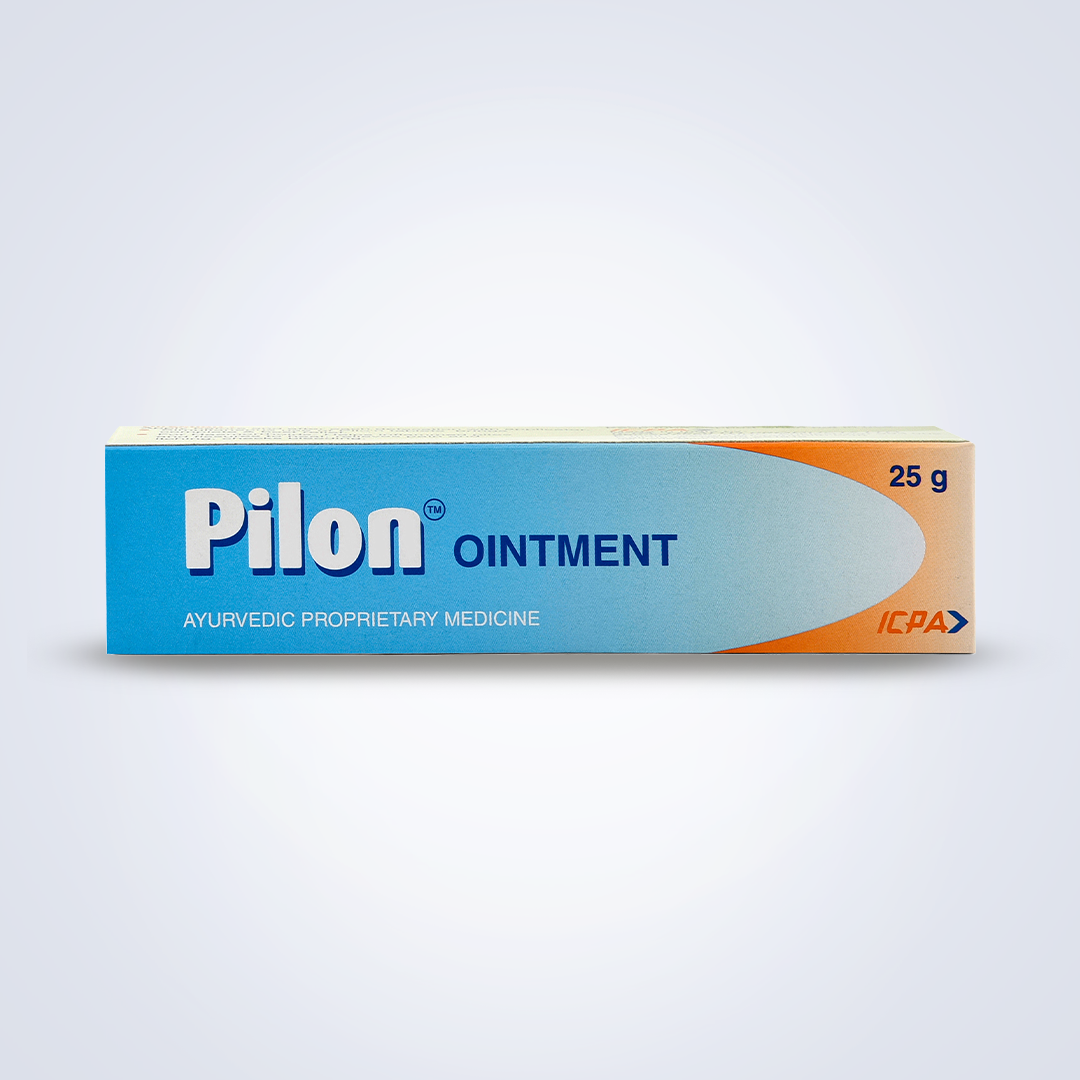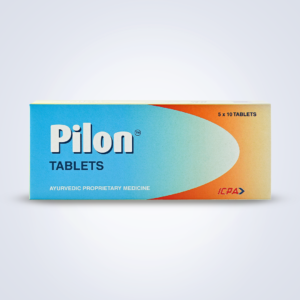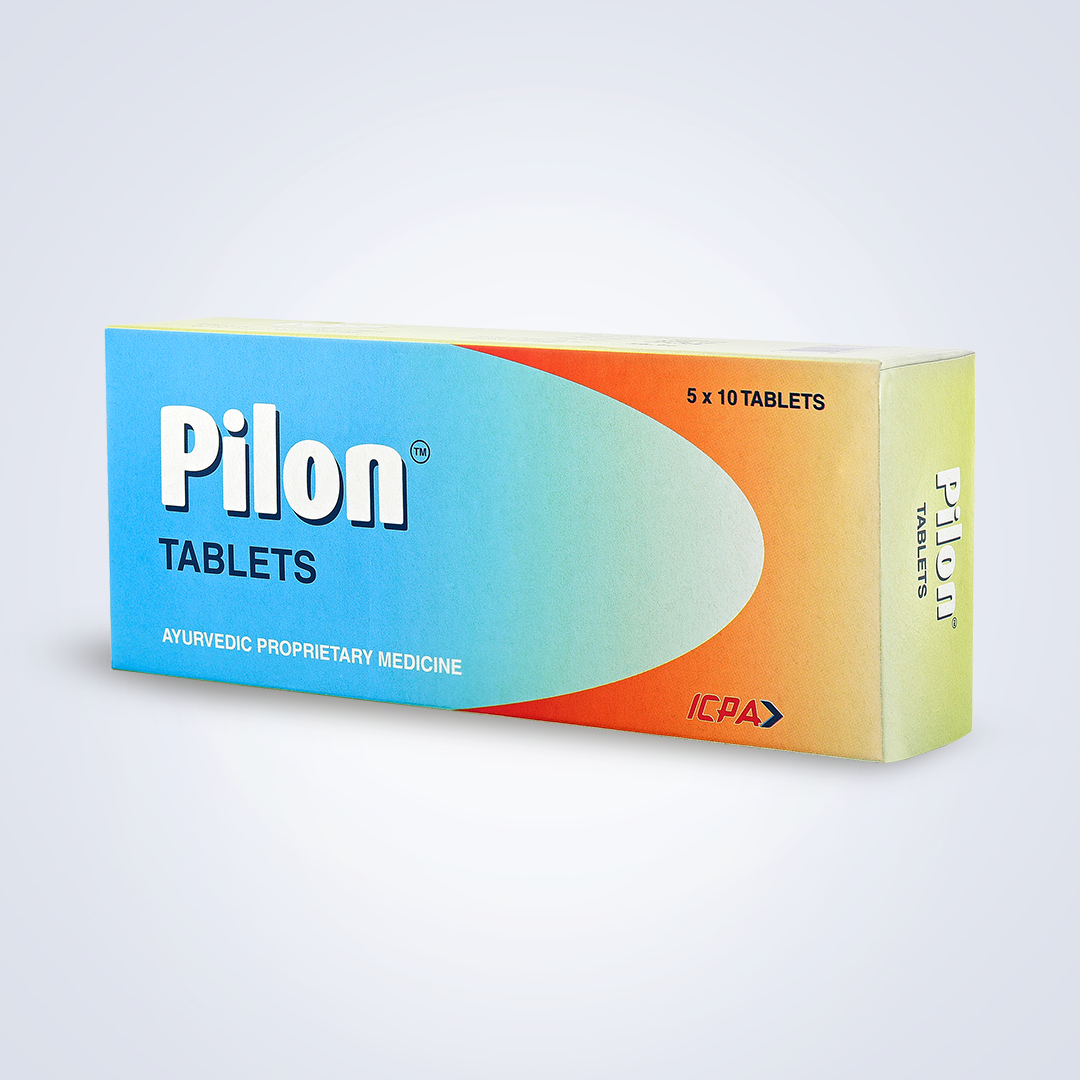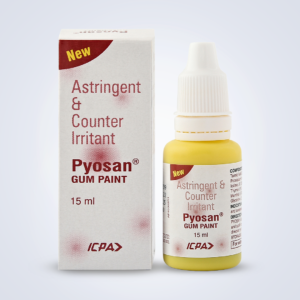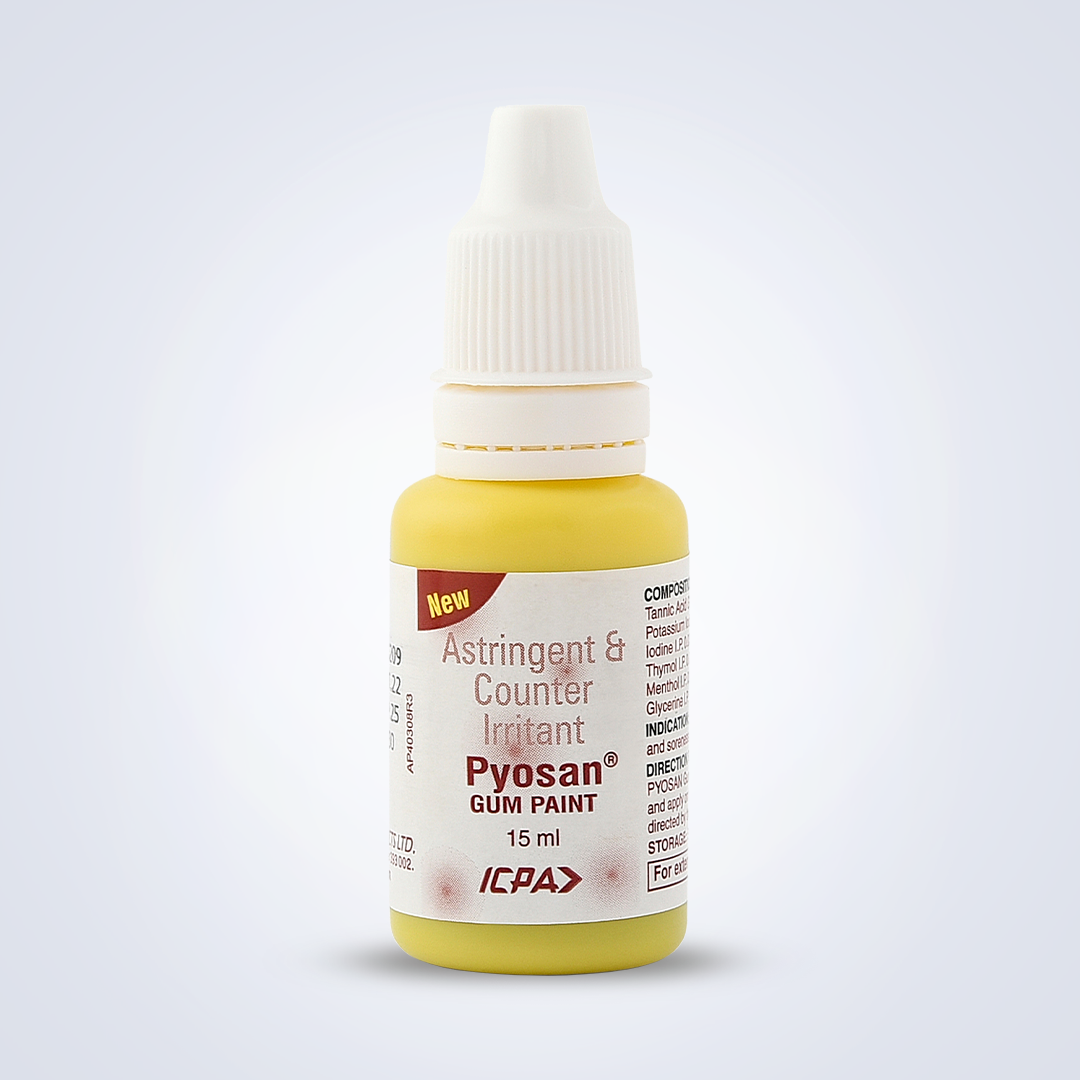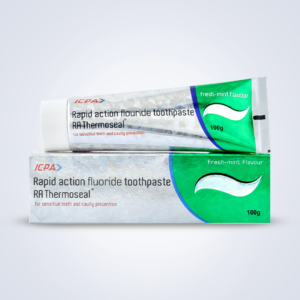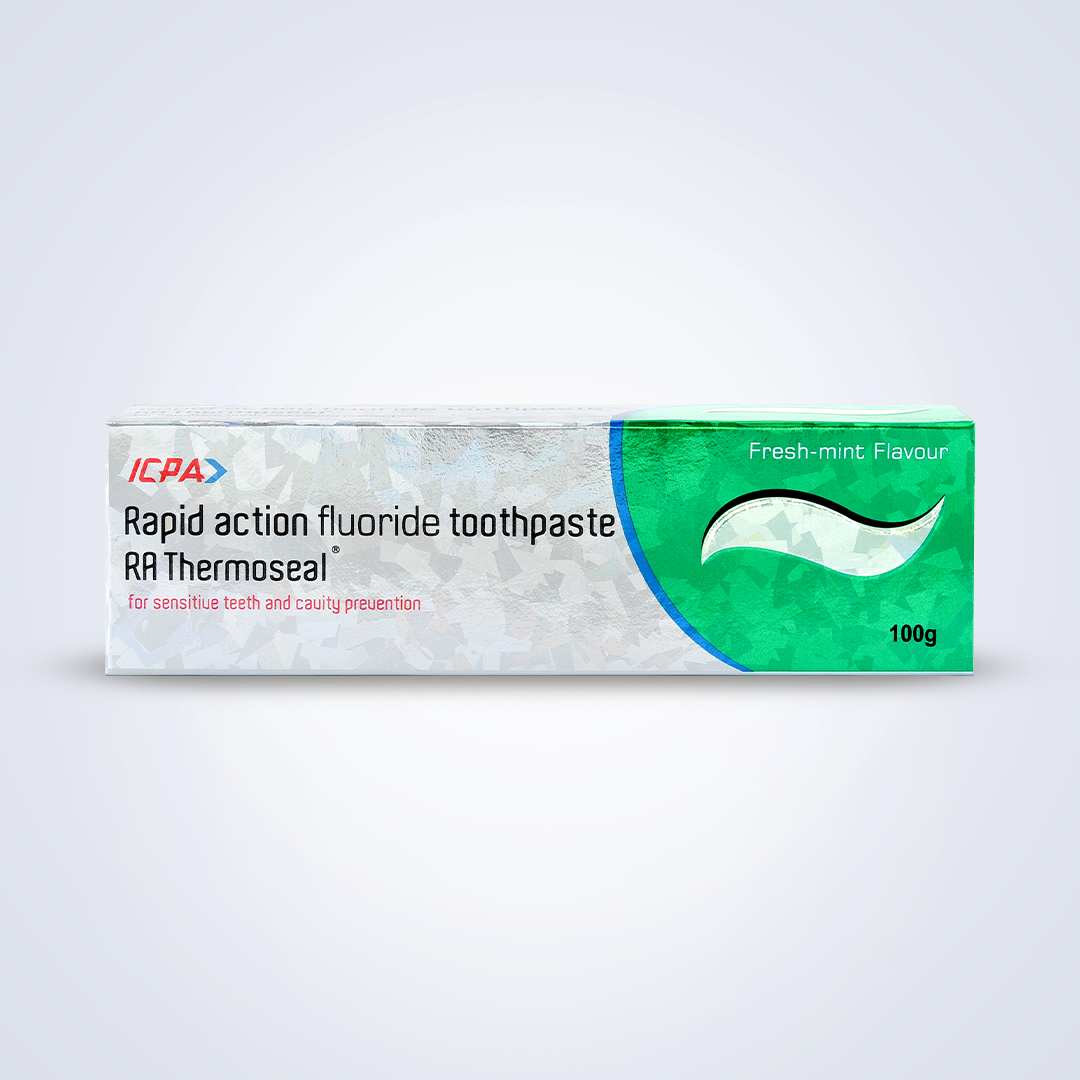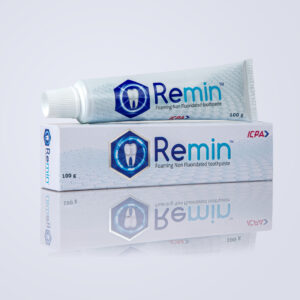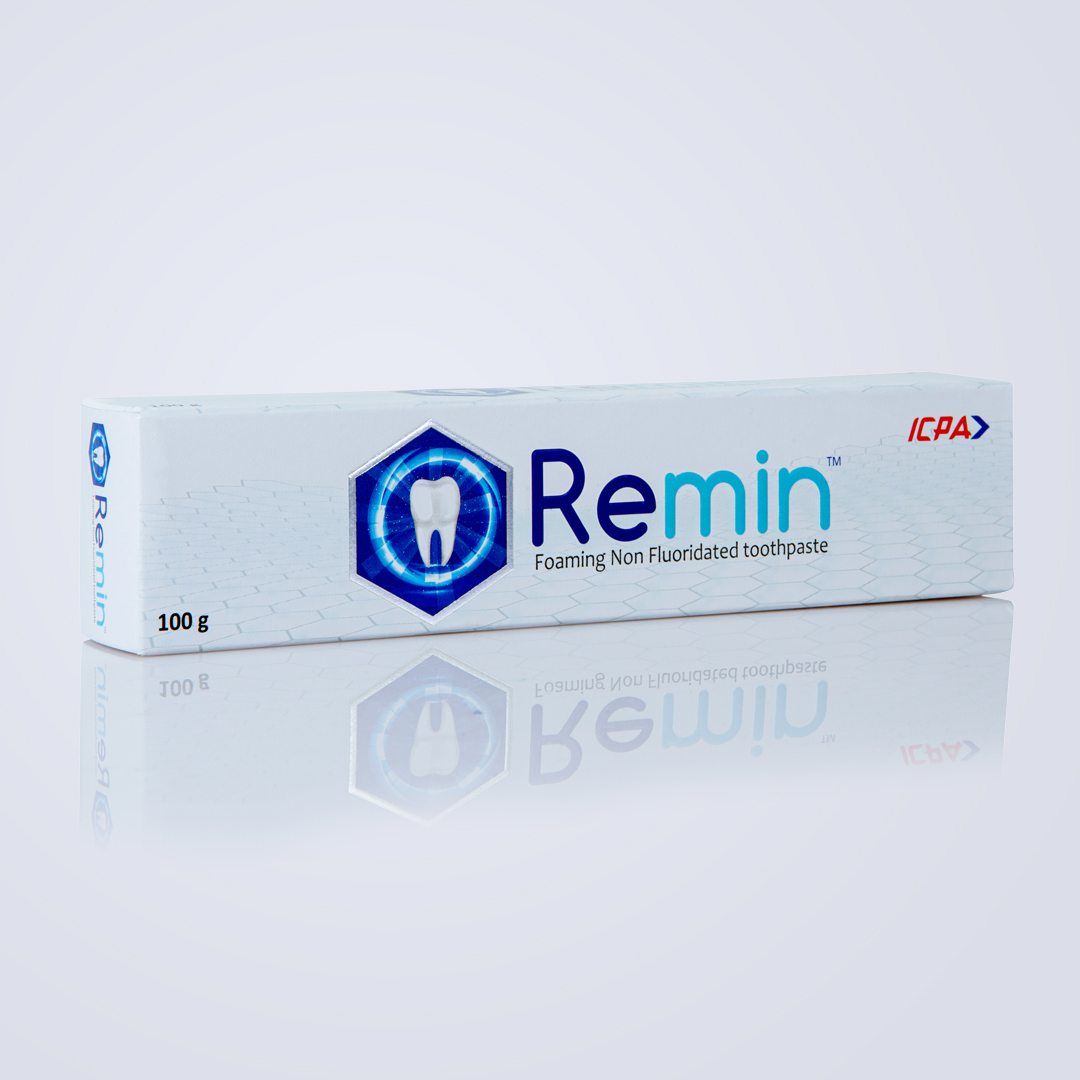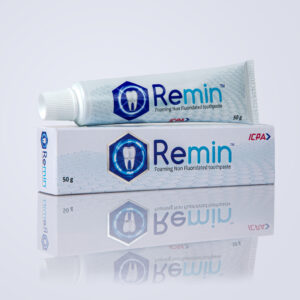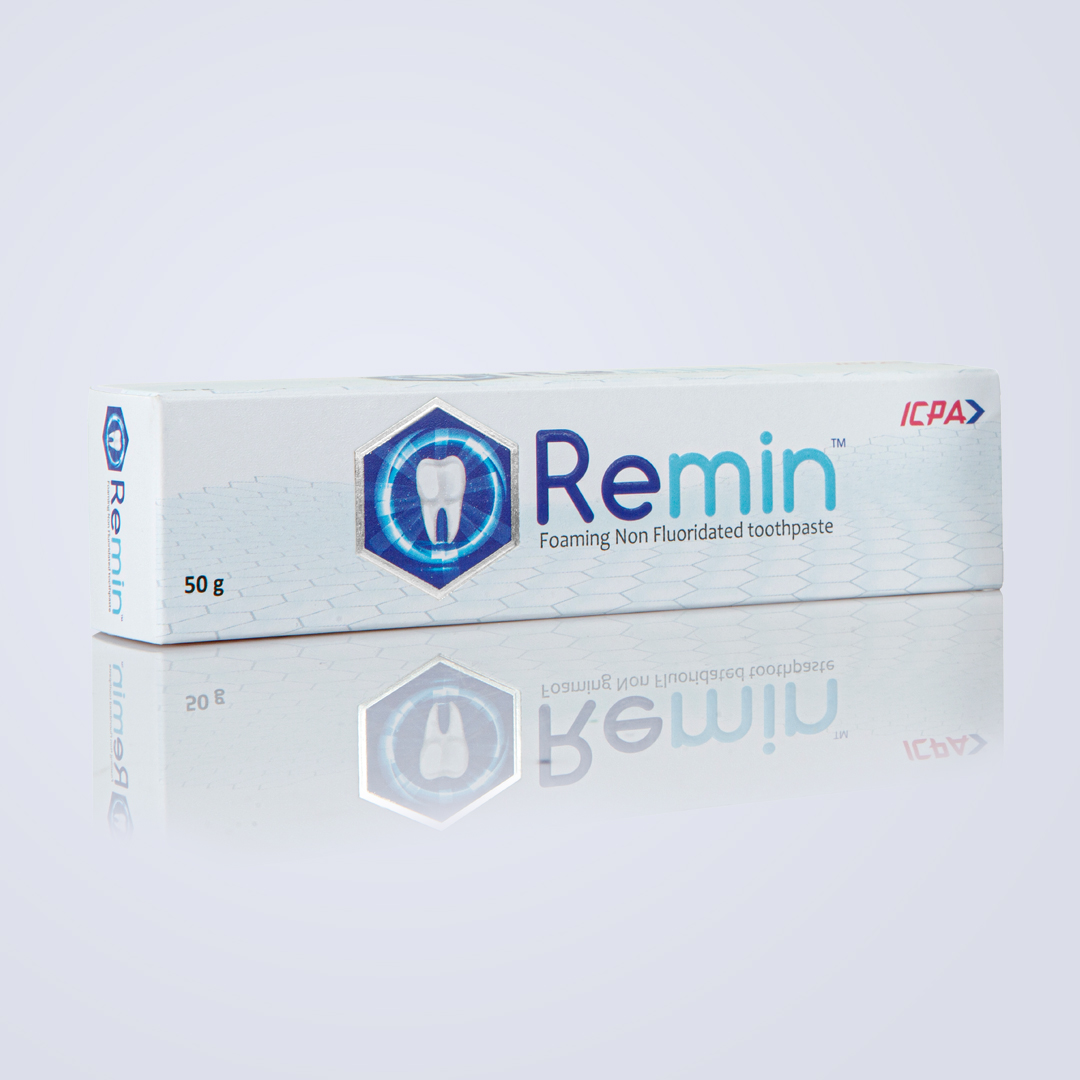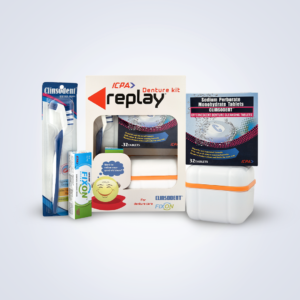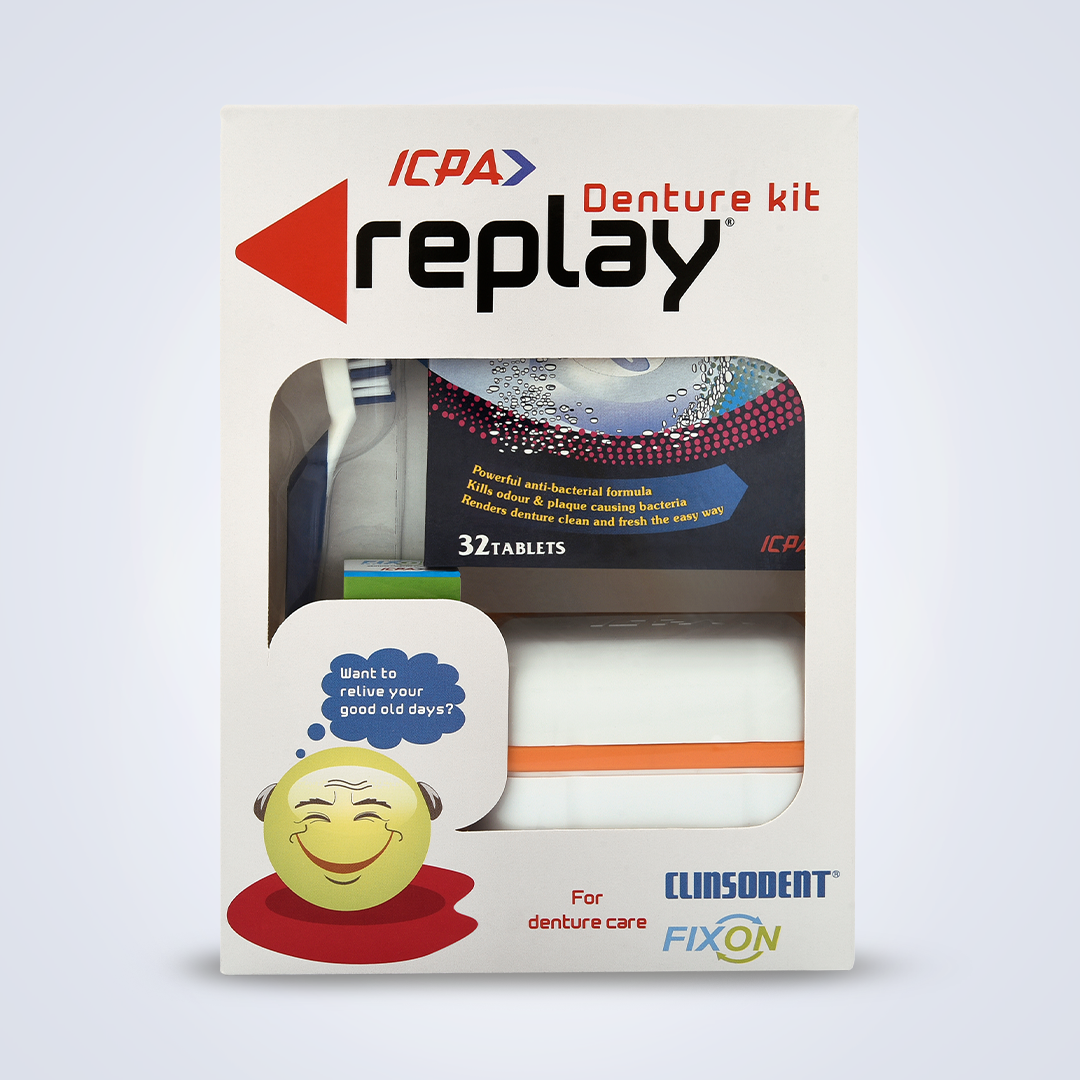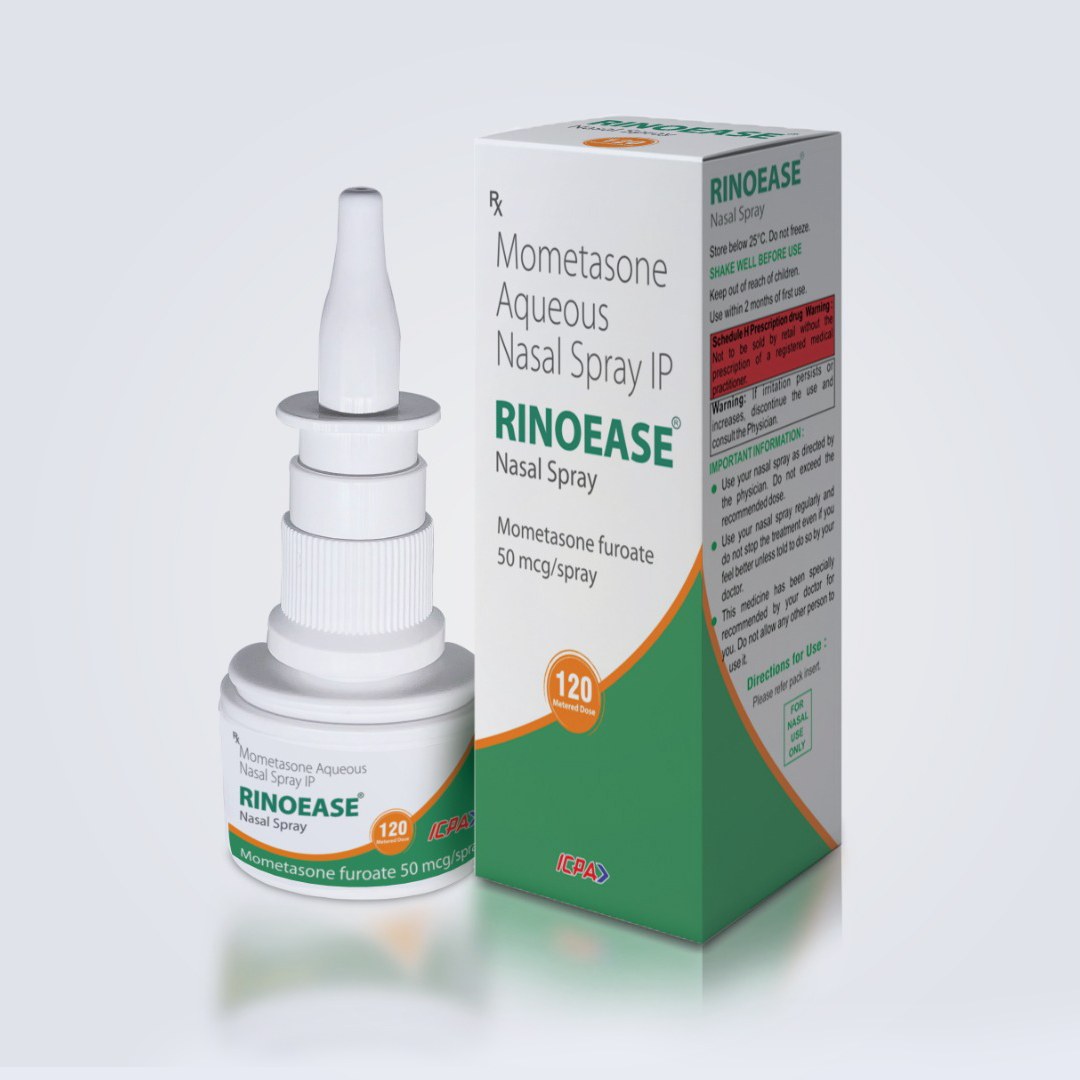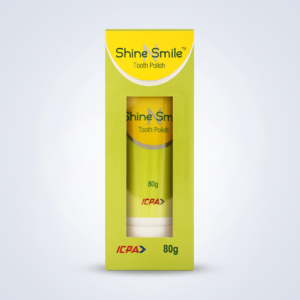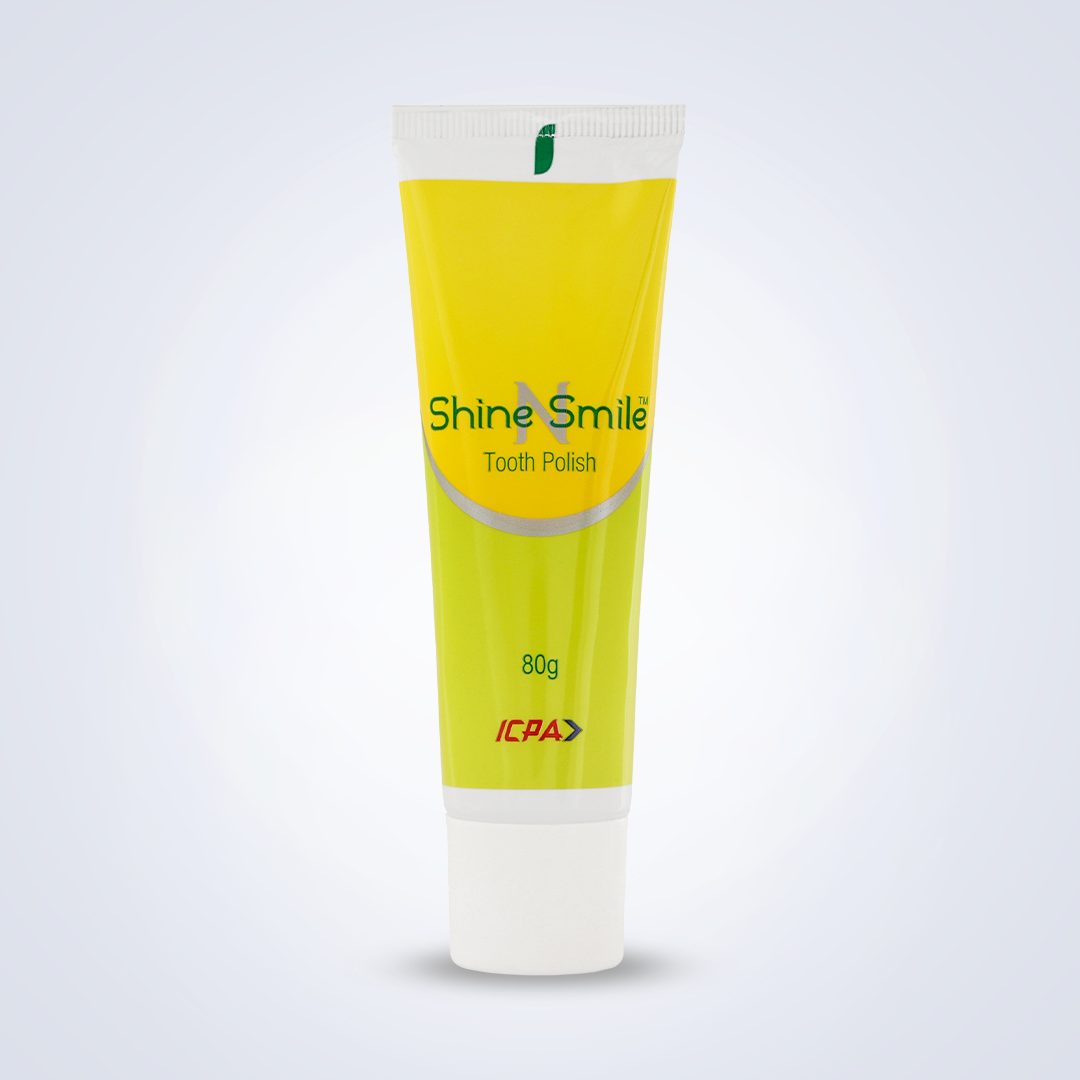Shop
Shop
Showing 25–36 of 51 results
-
Mucofibro Antioxidants
Read More Quick ViewComposition:
Mucofibro is a formulation of antioxidants available in the form of softgel capsules.
Each soft gelatin capsule contains
Lycopene – 5 mg,
Beta-carotene – 10 mg,
Alpha lipoic acid 50 mg,
Elemental copper – 1 mg,
Elemental selenium – 75 mcg,
Vitamin E – 10 IU and
Zinc sulphate – 27.45 mg.Reactive Oxygen Species (ROS) —Free radicals
ROS are chemical molecules, specifically oxygen species formed by the partial reduction of oxygen that are generated during mitochondrial oxidative metabolism as well as in cellular response to cytokines and bacterial invasion.
The double-edged sword
ROS serve as crucial players in our body’s defense against invading pathogens. ROS play pivotal roles in cell signaling, gene regulation, and antimicrobial defense. These molecules have antimicrobial properties that help combat infections in the oral cavity. However, ROS can be a “double-edged sword” since an excessive presence of these molecules can become cytotoxic to our cells.
The concept of Oxidative Stress:
To counteract the deleterious effects of excessive free radicals, our bodies possess an antioxidant defense system that can inhibit and reduce the damage caused by the harmful ROS. However, when ROS levels exceed cellular antioxidant capacity, a condition termed oxidative stress occurs. Oxidative stress is implicated in the pathogenesis of several conditions including aging, diabetes mellitus, hypertension, and cancer.
Antioxidants:
These are oxidative stress busters used as auxiliary treatments in a variety of conditions such as cardiovascular diseases, pulmonary diseases, aging, and atherosclerosis.
Mucofibro: Antioxidant supplemements
With an optimal combination of anti-oxidants, carotenoids, and minerals, Mucofibro detoxifies the cells by scavenging the cell-damaging free radicals. This cell detoxification removes oxidative stress in the cells and enhances the overall tissue healing capacity, which results in faster healing of various oral lesions and conditions. It also improves the clinical outcomes of various non-surgical and surgical treatments.
Indications
1. Precancerous lesions: Leukoplakia, Erythroplakia (to prevent/ slow down the malignant transformation)
2. Precancerous conditions: Oral Submucous Fibrosis (to prevent/ slow down the malignant transformation)
3. As an adjunct to non-surgical & surgical periodontal treatments for various gum diseases: Gingivitis and Periodontitis
4. As an adjunct to implant treatments to improve osseointegration.
5. As an adjunct to bone regeneration & tissue engineering procedures.
6. In various oral surgical procedures for improved healing.
7. For improved healing of oral ulcersA. The role of antioxidants in periodontal health
The link between oxidative stress and periodontal disease
Periodontal disease is a persistent inflammatory condition that impacts the periodontal tissues. Emerging research has elucidated the connection between oxidative stress and periodontal disease. An article in a high-impact factor journal terms periodontitis as an inflammatory disease of oxidative stress.
In the early stages of periodontal disease, especially in the case of periodontitis, a prominent oxidative process unfolds, characterized by elevated levels of reactive oxygen and nitrogen species (ROS and RNS). Evidence says that much of the damage done to periodontal tissues and supporting bone structure is due to ROS emission.Promising results
Recent evidence supports the idea that antioxidants can play a pivotal role in the treatment of periodontitis. A meta-analysis comprising fifteen clinical trials demonstrated uniformly positive outcomes associated with antioxidant supplementation during periodontitis treatment. Lycopene is emerging as a promising treatment modality as an adjunct to full-mouth periodontal treatment.
These findings offer hope and promise for those seeking alternative therapies to complement traditional periodontal treatments.B. The role of antioxidants in implantology
1. Antioxidants like lycopene exert proliferative effects on human osteoblasts.
2. Antioxidants like lycopene may increase new bone formation in periodontal and dental implant treatments.
3. Lycopene improves implant osseointegration and prevents delayed osseointegration.
4. Antioxidants also help in bone formation and prevent bone loss under osteopenic conditions.C. Antioxidants in pre-cancerous conditions like Oral Submucous Fibrosis (OSMF)
Mucofibro improves mouth opening and prevents the malignant transformation of OSMF (and other precancerous lesions/ conditions).
1. Lycopene, a carotenoid derived from plants, demonstrates anti-carcinogenic properties and prevents the malignant transformation of precancerous lesions and conditions. Lycopene exhibits the highest physical quenching rate constant with singlet oxygen. Lycopene is the first line of treatment for OSMF, apart from demonstrating profound benefits with precancerous lesions such as leukoplakia.
2. β-carotene, a precursor of vitamin A, is an antioxidant that traps free radicals. It retards the development of cancer cells by minimizing the free radical-induced damage.
3. α-Lipoic Acid (LA) is known as a universal antioxidant as it can remove free radicals in water as well as lipid medium.
4. α-Tocopherol (Vitamin E) has the antioxidant action.
5. Selenium (Se) is an anticarcinogenic agent that prevents unwanted cell growth.
6. Zinc (Zn), essential for multiple cellular functions, acts as an antioxidant andstabilizes membranes.
7. Copper (Cu) enhances the activity of antioxidants.Dose
2 times a day for 30 days or as directed by the doctor
Presentation
2 x 10 softgels
-
Mucopain 15gm
Read More Quick ViewComposition:
Benzocaine I.P. 20% w/w in a water-miscible base Topical anaesthetics come in various dosage forms, such as gels, sprays, creams, ointments, patches to provide the clinicians with precise options for application under various situations.
Understanding Benzocaine:
Benzocaine is an ester type molecule used for topical (surface) anaesthesia in a variety of settings, including dental procedures, preparation for infiltration anesthesia, and pain relief minor traumas to oral mucosa.
Topical anaesthetic agents such as Benzocaine penetrate the oral mucosa effectively and offer local anaesthetic activity that lasts for 10-20 minutes. The poor water solubility of Mucopain makes it safe for topical use. Local anaesthetics reversibly block nerve transmission, when applied to a limited area of the body. They bind to the sodium channels in the nerve membrane and prevent the entry of sodium ions in response to the membrane’s depolarization.
Mechanism of action:
1. Benzocaine acts by reversibly binding to and inhibiting sodium channels in the neuronal cell membrane.
2. Benzocaine first enters the cell in a nonionized form and then becomes ionized after traveling through the membrane bilayer.
3. Once ionized, benzocaine starts inhibiting the voltage-gated sodium channels by binding to their alpha subunit.
4. This binding stops cellular depolarization and minimizes the chances of action potential generation.
5. Benzocaine can bind more easily to sodium channels when they are in an open configuration.
6. The pKa value of local anesthetics is critical as it helps to determine their onset of action. Since benzocaine’s pKa value is relatively low (2.6) in comparison to other local anesthetics, its onset of action is quick, its rate of action is fast and relatively pH-independent.Indications:
For topical anaesthesia of all accessible mucous membrane, except eyes. For temporary local relief of pain associated with dental conditions and oropharyngeal disorders.
1. Nutritional deficiency induced ulcers
2. Traumatic ulcers, such as lip bite, cheek bite
3. Treatment induced ulcers: due to orthodontic appliances, oral surgical appliances, dentures
4. Mucosal injuries during instrumentation in dental procedures
5. Ulcers from autoimmune disorders, such as lichen planus, pemphigoid, pemphigus.
6. Oral submucous fibrosis (OSMF)
7. Oral ulcers in cancer patientsDirections for use:
For oral mucosal use only, as directed by a dentist. For the temporary relief of pain due to ulcers, or injuries from minor dental procedures.
Warning:
Discontinue medication and consult a doctor if sensitivity or irritation occurs. Safe use of Mucopain is not established during pregnancy on the foetus. Do not cover the affected area with cotton or other material. Not for infant use.
Methemoglobinemia warning
Use of this product may cause methemoglobinemia, a serious condition that warrants prompt clinical management because it reduces the amount of oxygen carried in the blood. This can occur even if one has used this product before. Stop use and seek immediate medical attention if you or a user in your care develops any of the following:
- pale, gray, or blue-colored skin (cyanosis)
- headache
- rapid heart rate
- shortness of breath
- dizziness or lightheadedness
- fatigue or lack of energy
Presentation:
Lamitube of 15g (0.52 oz)
-
Nummit Spray
Read More Quick ViewComposition:
Lidocaine U.S.P. 15% w/w Inert solvents & Propellant q.s. to 100% w/w Each actuation delivers 7.5mg of Lidocaine USP, CFC free.
Mode of action:
Local anesthetics like Lidocaine reversibly block nerve transmission, when applied to a limited area of the body. They bind to the sodium channels in the nerve membrane and prevent the entry of sodium ions in response to the membrane’s depolarization.
Indications:
Preoperative surface anesthesia and for painful oral conditions.
Directions for use:
Hold the container with the extension tube pointing towards the area of applications. Press the button to spray. Allow 2 seconds between two subsequent sprays. Shake the container before each use.
Caution:
Flammable, Pressurised container. Must not be punctured, broken, or incinerated, even when apparently empty. Keep out of reach of children. Keep away from eyes.
Storage:
Store in a cool and dry place. Keep away from heat and direct sunlight.
Presentation:
Metallic canister of 100 gm (3.52 oz)
-
Pilon Ointment 25gm
Read More Quick ViewComposition:
Kasisadi Oil 25% w/w Yashad Bhasma (Zinc oxi 5% w/w Karpoor (Camphor) 1% w/w Ointment base q.s.Indications:
HaemorrhoidsDirections for use:
Apply before and after each defecation with applicatorPresentation:
Tube of 25g (0.88 oz) with applicator
For better relief use Pilo’n Tablets and Pilon Ointment together -
Pilon Tablets 5×10&#..
Read More Quick ViewThe Complete Solution to Treat Piles
Composition:
Each sugar coated tablet contains:- Ativish (Aconitum Heterophyllum) 110 mg
- Kattha (Acacia Catechu) 60 mg
- Kariyal (Swertia Chirata) 30 mg
- Aritha (Sapindus Trifoliatus) 20 mg
- Sudha Fatkari (Alum) 18 mg
- Indrajav (Holarrhena Antidysenterica) 16 mg
- Gorakmundi (Sphearanthus Indicus) 16 mg
- Dharuharidra Aq. Extract (Berberis Aristata 16 mg
- Hirabol (Commiphora Myrrha) 16 mg
- Neem Bheej (Azadirachta Indica) 16 mg
- Gritkumari (Aloes) 8 mg
- Banslochan (Manna) 8 mg
- Saunf (Foeniculum Vulgare) 6 mg
- Sonamukhi (Senna) 6 mg
Indications:
Haemorrhoids, Pre and Post – operative treatment in hemorrhoidectomy.Dose:
1 tablet twice a day, for 30 days.Presentation:
Strip of 10 tablets. -
Pyosan Gum Paint 15ml
Read More Quick ViewComposition:
Tannic Acid 72%: Astringent
Glycerine 27%: Base for tannic acid
Iodine I.P. 0.03%: Counter-irritant and disinfectant
Potassium iodide I.P. 0.05%: Stabilizer for iodine
Menthol I.P. 0.05%: Mild anaesthetic and Rubifacient
Thymol I.P. 0.033%: Disinfectant and RubifacientCounterirritants and rubefacients
Counterirritants and rubefacients are substances used in periodontology and dentistry to alleviate pain and discomfort associated with oral conditions. They work by producing localized irritation or a sensation of heat on the skin or mucous membranes, which can help distract from or relieve pain.
Counterirritants:
Counterirritants are substances or agents that are applied topically to the skin or mucous membranes in the oral cavity. These substances create a mild irritation, which draws blood and immune system responses to the affected area, effectively diverting attention away from the original source of pain or discomfort. In periodontology, counterirritants may be used to alleviate pain associated with conditions like gingivitis, periodontitis, or oral ulcers.
Rubefacients:
Rubefacients are substances that produce a localized increase in blood flow and redness of the skin or mucous membranes when applied. In the context ofperiodontology, rubefacients may be used to increase blood flow to an area, which can help reduce inflammation and alleviate pain.
Mode of action:
Bleeding gums & pus discharge are a sign of poor oral hygiene and have to be treated symptomatically by a dentist. Astringents help to stop the bleeding & pus discharge of gums, by coagulating proteins. Iodine & Menthol will act as counterirritant & rubefacient and provide relief from itching & irritation. Menthol will additionally provide comfort to the patient.
Indication:
Inflamed sore gums/spongy gums
Directions for use:
Take Pyosan gum paint on the fingertip and apply on the affected gum.
Storage:
Store in cool, dark place.
Caution:
For external use only.
Presentation:
Plastic bottle of 15ml (0.5 fl. oz) with inbuilt dropper.
-
RA Thermoseal 100gm
Read More Quick ViewToothpaste for Dental Hypersensitivity
Composition:
Potassium Nitrate 5% w/w in toothpaste/gel base. Sodium monofluorophosphate 0.7% w/w (available fluoride content 917 ppm when packed).Mode of Action:
Dentinal hypersensitivity is a sharp pain produced in the teeth-, in response to stimuli, such as cold, heat, sweet, sour, or contact. It affects the quality of life and results in extreme discomfort or inability to eat or drink certain foods. It is caused due to opening of the dentinal tubules, after the enamel has been removed by factors such as attrition, abrasion, erosion, or gum recession. RA Thermoseal provides relief from dentinal pain by forming a neurosensory block. Fluoride provides cavity protection. It reduces the demineralization of enamel and dentin by decreasing the acid production of bacterial plaque and decreases the solubility of apatite crystals. It readily becomes incorporated as fluoroapatite layer, to reduce the dissolution of apatite during acid attacks.Indication:
Dentinal hypersensitivity.Directions:
Adults and children over 12 years of age should apply at least 2.5 cm (1”) strip of the product to a soft bristle toothbrush. Brush teeth to clean all surfaces thoroughly with RA Thermoseal toothpaste/gel at least twice a day (morning and evening), or as recommended by a dentist or doctor. Make sure to brush sensitive areas for a longer time.Uses:
- Builds increasing protection against sensitivity of teeth to cold, heat, acids, sweets or contact.
- Helps in the prevention of dental cavities.
Warnings:
For usage beyond 4 weeks, please consult a dentist or doctor. Keep out of reach of children under 6 years of age. Stop use and ask a dentist if the problem persists or worsens.Presentation:
Lamitube of 50g (1.76 oz) / 100g (3.52 oz), Gel in lamitube of 100g (3.52 oz). -
Remin 100gm
Read More Quick View1. Composition – Calcium sodium phosphosilicate 5%
2. Mode of Action – The reaction of Bioactive Glass particles begins when the material is subjected to an aqueous environment.
- Bioactive glass is made up of amorphous Calcium-sodium- phosphosilicate (CSPS).
- CSPS is highly reactive in aqueous environments, such as saliva in the oral cavity.
- The exposure to saliva leads to the release of Sodium ions from the bioactive glass.
- In saliva, sodium ions from the bioactive glass readily react with salivary hydrogen cations (H3O+) resulting in a localized, transient increase in pH.
- Increased pH leads to the release of calcium, phosphate, and silica ions forming a robust HA-like layer
3. Indications – To promote tooth surface remineralization (esp. White Spot Lesions) and prevent Tooth Surface Loss (demineralization) under acid attack.
- To promote enamel remineralization and reverse ongoing enamel demineralization caused by acidic diets and carious bacterial acids.
- For daily remineralization of dental white spot lesions (WSL) during orthodontic treatment.
- For daily remineralization of dental white spot lesions (WSL) in people prone to dental caries.
- To seal dentinal tubules on exposed dentine surfaces, creating a stable seal even under acid attack— to prevent and ensure long-term relief from dentinal hypersensitivity.
- Daily tooth surface remineralization before meals for patients with acid erosion (e.g., gastritis, reflux, GERD).
- To remineralize and strengthen the tooth surfaces before, during, and after tooth whitening procedures.
4. Directions
- Brush twice daily.
- Spit out and do not swallow.
- Close the cap after each use.
5. Uses – Foaming non-fluoridated toothpaste, for dental use only
6. Warning – storage below 30° c
7. Presentation- 50 g and 100 g -
Remin 50gm
Read More Quick View1. Composition – Calcium sodium phosphosilicate 5%
2. Mode of Action – The reaction of Bioactive Glass particles begins when the material is subjected to an aqueous environment.
- Bioactive glass is made up of amorphous Calcium-sodium- phosphosilicate (CSPS).
- CSPS is highly reactive in aqueous environments, such as saliva in the oral cavity.
- The exposure to saliva leads to the release of Sodium ions from the bioactive glass.
- In saliva, sodium ions from the bioactive glass readily react with salivary hydrogen cations (H3O+) resulting in a localized, transient increase in pH.
- Increased pH leads to the release of calcium, phosphate, and silica ions forming a robust HA-like layer
3. Indications – To promote tooth surface remineralization (esp. White Spot Lesions) and prevent Tooth Surface Loss (demineralization) under acid attack.
- To promote enamel remineralization and reverse ongoing enamel demineralization caused by acidic diets and carious bacterial acids.
- For daily remineralization of dental white spot lesions (WSL) during orthodontic treatment.
- For daily remineralization of dental white spot lesions (WSL) in people prone to dental caries.
- To seal dentinal tubules on exposed dentine surfaces, creating a stable seal even under acid attack— to prevent and ensure long-term relief from dentinal hypersensitivity.
- Daily tooth surface remineralization before meals for patients with acid erosion (e.g., gastritis, reflux, GERD).
- To remineralize and strengthen the tooth surfaces before, during, and after tooth whitening procedures.
4. Directions
- Brush twice daily.
- Spit out and do not swallow.
- Close the cap after each use.
5. Uses – Foaming non-fluoridated toothpaste, for dental use only
6. Warning – storage below 30° c
7. Presentation- 50 g and 100 g -
Replay Kit
Read More Quick ViewDenture Management Kit consisting of Denture Storewell, Clinsodent Tablets, Clinsodent Brush and Fixon Denture Adhesive Cream.
CLINSODENT® DENTURE BRUSH
Hygienically designed – No seams where dirt can get trapped.
2 types of nylon bristles designed to clean all surfaces and grooves.Contoured design – Maximises control of brushing. Ambidexterity – Works in right or left hand.
CLINSODENT® TABLETS
EFFERVESCENT DENTURE CLEANSING TABLETSFIXON CREAM
DENTURE ADHESIVE CREAM -
Rinoease Nasal Spray
Read More Quick ViewDOSAGE FORM: Aqueous intranasal spray For use by adults and children 12 years and over.
DESCRIPTION: Mometasone aqueous nasal spray is a synthetic trifluorinated corticosteroid with potent anti-inflammatory activity. The precise mechanism through which Mometasone Furoate affects rhinitis symptoms is not known.
INDICATIONS: Seasonal Allergic or Perennial Rhinitis, Nasal polyposis, Acute Rhinosinusitis, Adjunctive treatment of acute episodes of sinusitis. Mometasone Aqueous Nasal spray is indicated for the treatment of the
symptoms of seasonal and perennial allergic rhinitis in patients aged 12 years and older.DOSAGE AND ADMINISTRATION :
Adult and Adolescents (12 years of age and older): The recommended starting dosage is 2 sprays in each nostril once daily. When the maximum benefits have been achieved and symptoms have been controlled, reducing the dosage to 1 spray in each nostril once daily may be effective in maintaining control of allergic rhinitis symptoms. Children (2 to 11 Years of Age): As advised by the physician.ADMINISTRATION: Before administration of the first dose, shake the container well and actuate the pump 10 times (until a uniform spray is obtained). If the pump is not used for 14 days or longer, reprime the pump with 2 actuations until a uniform spray is observed before the next use.
CONTRAINDICATIONS: Mometasone Aqueous Nasal spray is contraindicated in patients with a hypersensitivity to Mometasone furoate or any of the ingredients.
WARNING AND PRECAUTIONS :
1. Use in pregnancy and lactation: Mometasone Aqueous nasal spray should be used during pregnancy only if the potential benefits justify the potential risk to the fetus.
2. Hypoadrenalism may occur in infants born to mothers receiving corticosteroids during pregnancy. Such infants should be carefully monitored. Since there is no data from controlled trials on the use of intranasal Mometasone Aqueous by nursing mothers, caution should be exercised when Mometasone Aqueous nasal spray is administered to a nursing mother.
3. Use in hepatic and renal impairment: Since Mometasone Furoate undergoes extensive first-pass metabolism by the hepatic cytochrome P450 isozyme, CYP3A4, the pharmacokinetics of Mometasone Furoate may be altered in patients with hepatic impairment. Therefore, use Mometasone Aqueous nasal spray with caution in patients with severe hepatic impairment. No dosage adjustment is required in patients with renal impairment.UNDESIRABLE EFFECTS:
The most common adverse events reported with Mometasone Furoate use are headache, epistaxis, pharyngolaryngeal pain, nasal ulceration, back pain, pyrexia headache, epistaxis, pharyngolaryngeal pain, nasal ulceration, back pain, pyrexia and coughPRESENTATION :
Plastic bottle with spray pump and over cap – 120 metered doses/pack.IMPORTANT INFORMATION :
1. Use your nasal spray as directed by the physician. Do not exceed the recommended dose.
2. Use your nasal spray regularly and do not stop the treatment even if you feel better unless told to do so by your doctor.
3. This medicine has been specially recommended by your doctor for you. Do not allow any other person to use itSTORAGE :
Store below 25°C. Do not freeze.SHAKE WELL BEFORE USE
Keep out of reach of children.
Use within 2 months of first use -
Shine-N-Smile 80gm
Read More Quick ViewComposition:
Mild abrasive with Sodium monofluorophosphate 0.8% fluoride content: 800 ppm, non-foaming
Mode of action:
Dull, yellowish teeth are a source of constant embarrassment to a person. Shine-N-Smile offers a mild abrasive that polishes the teeth and renders them sparkling white.
Indications:
1. Home use: Dull yellowish teeth, mild to moderate stain.
2. Clinic use: As a polishing agent after professional scaling of teeth.Directions for use:
Use in place of regular toothpaste, twice a week only.
Caution:
Should be kept away from children under 12 years. Not to be swallowed.
Storage:
Keep the tube capped when not in use.
Presentation:
Tube of 80gm
Quick Links
Our Products
Information
Contact us
- 216-219, Adarsh Industrial Estate, Sahar Road, Chakala, Andheri (East), Mumbai - 400099
- Fax : 28216928
- +91 22 40065305 / 40065306 / 40065307
- info@icpahealth.com


Selected Icpa Products
Click on Add to cart to add this item in cart.
| PRODUCTS | QTY | PRICE | VALUE in INR |
|---|
Selected Icpa Products
Click on Add to cart to add this item in cart.
| PRODUCTS | QTY | PRICE | VALUE in INR |
|---|

